Paul Bishop's Blog, page 3
December 21, 2019
WESTERN NOVELS/MOVIES—CATLOW
 WESTERN NOVELS/MOVIESCATLOW
WESTERN NOVELS/MOVIESCATLOW Ben Cowan and Abijah Bijah Catlow had been bound as friends since childhood. By the time they reached manhood, however, they had drifted apart. Ben had taken the path to wearing a tin star, while Catlow followed a more serpentine trail to becoming a top cowhand with a wild streak who followed the spirit of the law if not the letter. By mutual consent, they avoid each other so as not to force a confrontation. But after a disastrous confrontation with a band of greedy ranchers, Catlow is branded an outlaw and it is U.S. Marshal Ben Cowan’s job to bring him in alive—if Catlow will let him.
 When Catlow escapes to Mexico, determined to pull off a Confederate gold heist and retire, Ben is hot on his trail. But circumstances will force the two men on opposite sides of the law to become allies again, fighting for survival as they are pursued across the harsh Mexican desert by forces who want them both dead.
When Catlow escapes to Mexico, determined to pull off a Confederate gold heist and retire, Ben is hot on his trail. But circumstances will force the two men on opposite sides of the law to become allies again, fighting for survival as they are pursued across the harsh Mexican desert by forces who want them both dead.While Catlow is clearly from the early stages of L’Amour’s writing career, it has a stripped down charm I found satisfying. I enjoyed the interplay between Catlow and Cowan—friends turned reluctant adversaries—and found myself rooting for both characters to win.
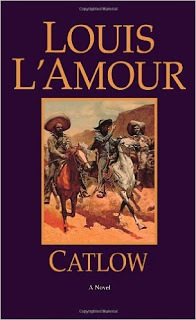 L’Amour was a master at creating this type of reader engagement and, because Catlow is so stripped down, an attentive reader can get a glimpse of the behind the scenes writing mechanics. I found this fascinating. There is some justification to believe Catlow was an unsold pulp story L’Amour whipped into shape quickly to keep up with the demands of his publisher’s schedule after he (justifiably) took too long expanding the novelization of the movie How The West Was Won.
L’Amour was a master at creating this type of reader engagement and, because Catlow is so stripped down, an attentive reader can get a glimpse of the behind the scenes writing mechanics. I found this fascinating. There is some justification to believe Catlow was an unsold pulp story L’Amour whipped into shape quickly to keep up with the demands of his publisher’s schedule after he (justifiably) took too long expanding the novelization of the movie How The West Was Won.As a side note to clear up an often confused fact, the movie How the West Was Won was based on a series of Life magazine articles from 1959—not an original novel by L’Amour. In actuality, James R. Webb’s screenplay was brilliantly novelized by L’Amour to coincide with the release of the film. L’Amour, however, went beyond simply novelizing the screenplay. With his usual attention to details and characters, he expanded the vision of the screenplay into a true novel, which became one of his most renown.
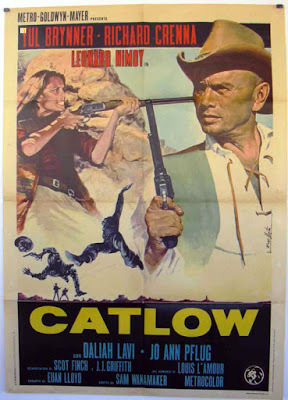 The movie version of Catlow will never be considered a classic Western, but it remains an entertaining film. Anchored by the presence of Yul Brynner as Catlow—displaying a surprising sardonic side appropriate to the character—and Richard Crenna as Ben Cowan, the movie is notable for the appearance of Leonard Nimoy as the mercenary Miller, the villain of the piece.
The movie version of Catlow will never be considered a classic Western, but it remains an entertaining film. Anchored by the presence of Yul Brynner as Catlow—displaying a surprising sardonic side appropriate to the character—and Richard Crenna as Ben Cowan, the movie is notable for the appearance of Leonard Nimoy as the mercenary Miller, the villain of the piece.Leonard Nimoy mentioned this film in both of his autobiographies as it gave him a chance to break away from his role as Spock on Star Trek. He stated the time during which he made the film was one of the happiest periods of his life, even though his part was rather brief.
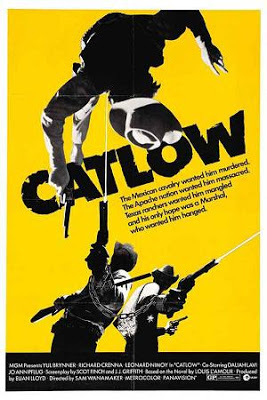 Like the book, the movie boils down to two characters, on different sides of the law, who remain great friends while unafraid to punch, or shoot, at each other to gain an advantage. Released in 1971, Catlow has a rawness typical to Westerns of the time period, including experimental filming techniques such as the extremely fast editing of some scenes.
Like the book, the movie boils down to two characters, on different sides of the law, who remain great friends while unafraid to punch, or shoot, at each other to gain an advantage. Released in 1971, Catlow has a rawness typical to Westerns of the time period, including experimental filming techniques such as the extremely fast editing of some scenes. CONTRIBUTOR ~ PAUL BISHOP
Published on December 21, 2019 20:12
December 8, 2019
VINTAGE WESTERN MOVIES—NEVADA SMITH
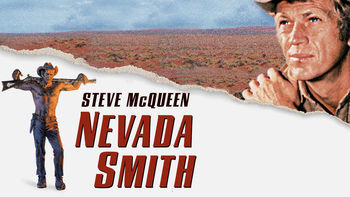 VINTAGE WESTERN MOVIESNEVADA SMITHSteve McQueen takes on the role of young, uneducated, half-breed Nevada Smith (aka: Max Sand). When Nevada’s parents are tortured, robbed, and slaughtered by three men (Karl Malden, Martin Landau, Arthur Kennedy), the scene is set for a truly classic revenge film. Completely ill-equipped for his quest, Nevada finds a mentor in traveling gunsmith Jonas Cord (Brian Keith), who takes pity on him.
VINTAGE WESTERN MOVIESNEVADA SMITHSteve McQueen takes on the role of young, uneducated, half-breed Nevada Smith (aka: Max Sand). When Nevada’s parents are tortured, robbed, and slaughtered by three men (Karl Malden, Martin Landau, Arthur Kennedy), the scene is set for a truly classic revenge film. Completely ill-equipped for his quest, Nevada finds a mentor in traveling gunsmith Jonas Cord (Brian Keith), who takes pity on him.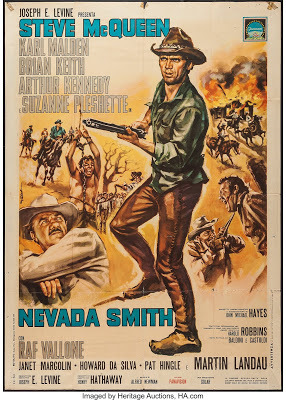 Thinking him foolish, but determined, Cord teaches Nevada the skills of a gunslinger, telling him, “Now, you get to where you can do that with either hand when you’re half-drunk or half-awake or inside a dark room or off the back of a running horse, you might stand a chance...a small chance.”
Thinking him foolish, but determined, Cord teaches Nevada the skills of a gunslinger, telling him, “Now, you get to where you can do that with either hand when you’re half-drunk or half-awake or inside a dark room or off the back of a running horse, you might stand a chance...a small chance.”Nevada becomes a dogged man-tracker as he learns to read and write, how to follow clues and sign, and how to use fear to make his quarries sweat after the killing starts. My favorite line in the film deals directly with this scene when Jonas Cord explains, “It ain't that easy, kid. Findin' em's one thing. Killin' em's another.”
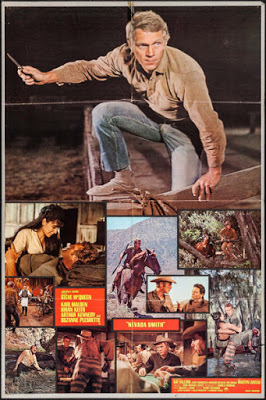 Nevada Smith’s character is supposed to be sixteen, which was a stretch for the 36-year-old Steve McQueen. With blond hair and blue eyes, he doesn’t look half Kiowa either. Brian Keith is solid as the itinerant gunsmith, and Karl Malden is suitably menacing as the main villain. Suzanne Pleshette is underused as the young Cajun Pilar whose limited screen time comes to a nasty end.
Nevada Smith’s character is supposed to be sixteen, which was a stretch for the 36-year-old Steve McQueen. With blond hair and blue eyes, he doesn’t look half Kiowa either. Brian Keith is solid as the itinerant gunsmith, and Karl Malden is suitably menacing as the main villain. Suzanne Pleshette is underused as the young Cajun Pilar whose limited screen time comes to a nasty end.It is, however, the professionalism of the secondary characters that keeps the film on track—Pat Hingle as a prison trustee, Howard da Silva as the Louisiana prison camp warden, along with Iron Eyes Cody and Strother Martin in uncredited bit parts. The not yet WKRP’s blonde bombshell, Loni Anderson can be spotted sporting a headfull of brunette tresses as a dance hall girl with a line or two of dialogue.
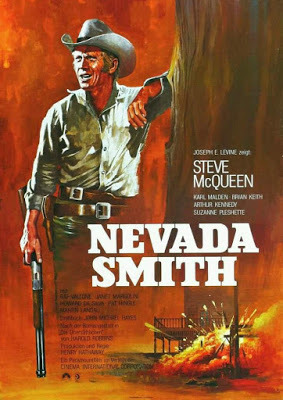 Suffering from uninspired directing and an episodic nature, Nevada Smith could be cast aside as a predictable actioneer. However, I found I was able to overlook the film’s shortcomings for two reasons. First is the relationship between Nevada and Jonas Cord. It is paternal in nature, giving Nevada back an emotional handhold he lost with the murder of his parents. Despite his inclinations, Cord takes naturally to the role of mentor. Brian Keith’s gruff portrayal of Cord has depth and emotion, showing Cord truly cares what happens to Nevada.
Suffering from uninspired directing and an episodic nature, Nevada Smith could be cast aside as a predictable actioneer. However, I found I was able to overlook the film’s shortcomings for two reasons. First is the relationship between Nevada and Jonas Cord. It is paternal in nature, giving Nevada back an emotional handhold he lost with the murder of his parents. Despite his inclinations, Cord takes naturally to the role of mentor. Brian Keith’s gruff portrayal of Cord has depth and emotion, showing Cord truly cares what happens to Nevada.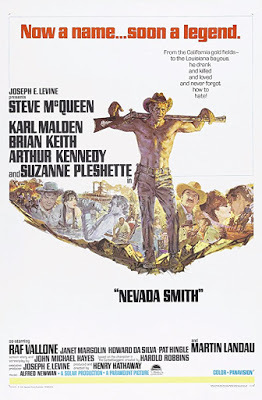 This leads to my second reason for rating the film highly. Cord’s warnings about the cost of vengeance, and the ability to recover from tragedy in other ways, can be seen to begin slowly working on Nevada. The life lessons Cord taught do not fall fallow. Instead, they lead to a deep character change within Nevada, which plays out in the film’s finale. This multi-layered examination of vengeance and its effect on the human spirit raise Nevada Smith from mundane to memorable.
This leads to my second reason for rating the film highly. Cord’s warnings about the cost of vengeance, and the ability to recover from tragedy in other ways, can be seen to begin slowly working on Nevada. The life lessons Cord taught do not fall fallow. Instead, they lead to a deep character change within Nevada, which plays out in the film’s finale. This multi-layered examination of vengeance and its effect on the human spirit raise Nevada Smith from mundane to memorable.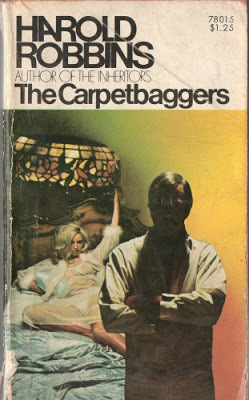 The name Nevada Smith was the inspiration for the name Indiana Jones. The Raiders of the Lost Ark character was originally named Indiana Smith. George Lucas named him Indiana after his dog, and Smith after this movie. It was, of course, later changed to Indiana Jones.
The name Nevada Smith was the inspiration for the name Indiana Jones. The Raiders of the Lost Ark character was originally named Indiana Smith. George Lucas named him Indiana after his dog, and Smith after this movie. It was, of course, later changed to Indiana Jones. While completely independent of each other, Nevada Smith (1966) can be seen as a prequel to a movie made two years earlier, The Carpetbaggers(1964). Based on the sleazy Harold Robbins novel of the same name, The Carpetbaggers starred George Peppard as Jonas Cord and Alan Ladd (in his final film role) as former western gunslinger turned actor, Nevada Smith.

Published on December 08, 2019 10:14
December 5, 2019
BOOK GIFT RECOMMENDATIONS
 BOOK GIFT
BOOK GIFTRECOMMENDATIONSThis blog is most often a conduit for subjects connected to vintage Westerns, men's adventure fiction, and whatever else strikes my fancy or catches my interest. Every once in awhile I even go out on a limb to mention some great books I've enjoyed outside of my usual reading lanes.
 I've always shaken my head in bewilderment whenever I hear a reader dismiss entire genres as not worth reading. I've heard it all at one time or another out of the mouths of the ignorant: I don't read romance, it's just for women ignored by their husbands or who can't get one...I never read Westerns, they're too old fashioned...Those men's adventure books are crap...Vampire books are stupid...Y/A books are just for kids...Science fiction is boring...Fantasy novels are just for geeks and nerds...Why read the Bible, religion is irrelevant...I don't understand why you read all that crap, it's a waste of time...
I've always shaken my head in bewilderment whenever I hear a reader dismiss entire genres as not worth reading. I've heard it all at one time or another out of the mouths of the ignorant: I don't read romance, it's just for women ignored by their husbands or who can't get one...I never read Westerns, they're too old fashioned...Those men's adventure books are crap...Vampire books are stupid...Y/A books are just for kids...Science fiction is boring...Fantasy novels are just for geeks and nerds...Why read the Bible, religion is irrelevant...I don't understand why you read all that crap, it's a waste of time... There isn't a genre I haven't read, and I've found crap books in every one of them. But, more importantly, I've read brilliant books in every one of those same genres. Granted there are genres of which I'm not a huge fan. I read very little of what appears on the traditional bestseller lists, but every once in a while I'll give a bestselling beach book a try and strike gold. Good writing is good writing whatever the genre.
There isn't a genre I haven't read, and I've found crap books in every one of them. But, more importantly, I've read brilliant books in every one of those same genres. Granted there are genres of which I'm not a huge fan. I read very little of what appears on the traditional bestseller lists, but every once in a while I'll give a bestselling beach book a try and strike gold. Good writing is good writing whatever the genre.Recently, I've read three books, which would not have usually jumped to the top of my teetering To Be Read pile, but I'm glad they did. Any one of them would make a great holiday gift for the reader on your list...
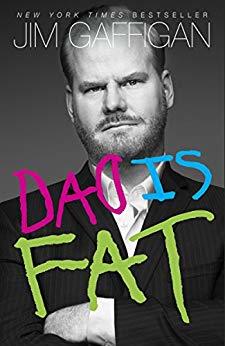 DAD IS FATJIM GAFFIGANJim Gaffigan never imagined he would have his own kids. Though he grew up in a large Irish-Catholic family, Jim was satisfied with the nomadic, nocturnal life of a standup comedian, and was content to be "that weird uncle who lives in an apartment by himself in New York that everyone in the family speculates about." But all that changed when he married and found out his wife, Jeannie "is someone who gets pregnant looking at babies."
DAD IS FATJIM GAFFIGANJim Gaffigan never imagined he would have his own kids. Though he grew up in a large Irish-Catholic family, Jim was satisfied with the nomadic, nocturnal life of a standup comedian, and was content to be "that weird uncle who lives in an apartment by himself in New York that everyone in the family speculates about." But all that changed when he married and found out his wife, Jeannie "is someone who gets pregnant looking at babies."Five kids later, the comedian whose riffs on everything from Hot Pockets to Jesus have scored millions of hits on YouTube, started to tweet about the mistakes and victories of his life as a dad. Those tweets struck such a chord that he soon passed the million followers mark. But it turns out 140 characters are not enough to express all the joys and horrors of life with five kids, so hes' now sharing it all in Dad Is Fat.
From new parents to empty nesters to Jim's twenty-something fans, everyone will recognize their own families in these hilarious takes on everything from cousins ("celebrities for little kids") to growing up in a big family ("I always assumed my father had six children so he could have a sufficient lawn crew") to changing diapers in the middle of the night ("like The Hurt Locker but much more dangerous") to bedtime (aka "Negotiating with Terrorists").
Dad is Fat is sharply observed, explosively funny, and a cry for help from a man who has realized he and his wife are outnumbered in their own home.
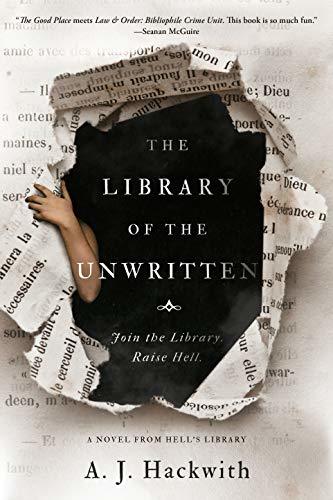 THE LIBRARY OF THE UNWRITTENA. J. HACKWITHIn the first book in a brilliant new fantasy series, books that aren't finished by their authors reside in the Library of the Unwritten in Hell, and it is up to the Librarian to track down any restless characters who emerge from those unfinished stories.
THE LIBRARY OF THE UNWRITTENA. J. HACKWITHIn the first book in a brilliant new fantasy series, books that aren't finished by their authors reside in the Library of the Unwritten in Hell, and it is up to the Librarian to track down any restless characters who emerge from those unfinished stories.Many years ago, Claire was named Head Librarian of the Unwritten Wing—a neutral space in Hell where all the stories unfinished by their authors reside. Her job consists mainly of repairing and organizing books, but also of keeping an eye on restless stories that risk materializing as characters and escaping the library. When a Hero escapes from his book and goes in search of his author, Claire must track and capture him with the help of former muse and current assistant Brevity and nervous demon courier Leto.
But what should have been a simple retrieval goes horrifyingly wrong when the terrifyingly angelic Ramiel attacks them, convinced that they hold the Devil's Bible. The text of the Devil's Bible is a powerful weapon in the power struggle between Heaven and Hell, so it falls to the librarians to find a book with the power to reshape the boundaries between Heaven, Hell….and Earth.
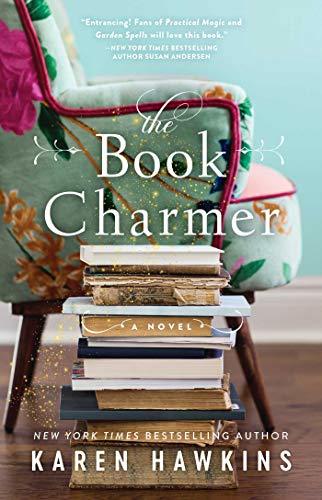 THE BOOK CHARMERKAREN HAWKINSNew York Times bestselling author Karen Hawkins crafts an unforgettable story about a sleepy Southern town, two fiercely independent women, and a truly magical friendship.
THE BOOK CHARMERKAREN HAWKINSNew York Times bestselling author Karen Hawkins crafts an unforgettable story about a sleepy Southern town, two fiercely independent women, and a truly magical friendship.Sarah Dove is no ordinary bookworm. To her, books have always been more than just objects: they live, they breathe, and sometimes they even speak. When Sarah grows up to become the librarian in her quaint Southern town of Dove Pond, her gift helps place every book in the hands of the perfect reader. Recently, however, the books have been whispering about something out of the ordinary: the arrival of a displaced city girl named Grace Wheeler.
If the books are right, Grace could be the savior that Dove Pond desperately needs. The problem is, Grace wants little to do with the town or its quirky residents—Sarah chief among them. It takes a bit of urging, and the help of an especially wise book, but Grace ultimately embraces the challenge to rescue her charmed new community. In her quest, she discovers the tantalizing promise of new love, the deep strength that comes from having a true friend, and the power of finding just the right book.
A mesmerizing fusion of the mystical and the everyday, The Book Charmer is a heartwarming story about the magic of books that feels more than a little magical itself. Prepare to fall under its spell.
Published on December 05, 2019 19:49
December 4, 2019
THE HITMAN'S HITMAN
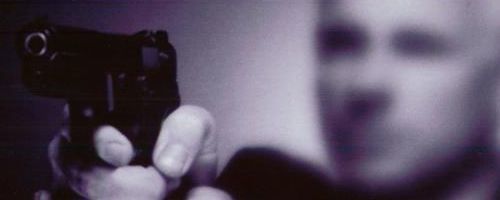 THE HITMAN'S HITMAN
THE HITMAN'S HITMAN Lawrence Block's philatelic hitman Keller and Max Allan Collins' hipper than hip hitman Quarry get all the attention, but there is a third literary anti-hero hitman who, if his body count is any indication, may be deadlier than the other two killers combined—Detroit based hitman Peter Macklin created by Loren Estleman.
Macklin is certainly the most taciturn of the three, an average everyman, a cypher who still manages to have more family drama and angst than a full season of Real Wives of Beverly Hills. Add in a bad break with his previous employer—The Mob—and it’s no wonder the guy is a cold killing machine.
 I am a fan of Loren Estleman’s work. Everything from his underrated Amos Walker private-eye mysteries to his Westerns featuring Sheriff Page Murdock to his numerous standalone titles. There is no doubt Estleman is a good writer, an excellent writer if his five Spur awards and a Pulitzer nomination qualify him as such. However, somewhere along the way, his Amos Walker novels drifted off my radar.
I am a fan of Loren Estleman’s work. Everything from his underrated Amos Walker private-eye mysteries to his Westerns featuring Sheriff Page Murdock to his numerous standalone titles. There is no doubt Estleman is a good writer, an excellent writer if his five Spur awards and a Pulitzer nomination qualify him as such. However, somewhere along the way, his Amos Walker novels drifted off my radar.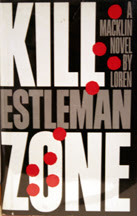 I’d enjoyed Estleman’s first three books to feature hitman Peter Macklin in the eighties (Kill Zone, Roses Are Dead, Any Man’s Death), but by the time numbers four and five appeared in 2002, after a sixteen year gap (Something Borrowed, Something Black and Little Black Dress), my reading habits had changed from hardboiled novels and associated mystery genres to a steady diet of Westerns.
I’d enjoyed Estleman’s first three books to feature hitman Peter Macklin in the eighties (Kill Zone, Roses Are Dead, Any Man’s Death), but by the time numbers four and five appeared in 2002, after a sixteen year gap (Something Borrowed, Something Black and Little Black Dress), my reading habits had changed from hardboiled novels and associated mystery genres to a steady diet of Westerns.However, at the recent Bouchercon event in Dallas, those attending had the opportunity to pick four free books from a vast array of publisher provided promotional copies. Amongst the dross, I was pleased to find a stack of Estleman’s 27th Amos Walker novel, Black and White Ball. Reading the jacket copy, I realized it was a Walker/Macklin crossover tale and was immediately sold.
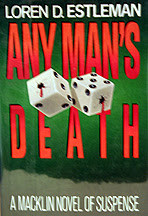 Of the four books I picked up at Bouchercon, Black and White Ball intrigued me the most. Once back home, the other three were relegated to the bookshelves. However, I began reading Black and White Ball and was quickly reminded why Estelman is considered a master storyteller.
Of the four books I picked up at Bouchercon, Black and White Ball intrigued me the most. Once back home, the other three were relegated to the bookshelves. However, I began reading Black and White Ball and was quickly reminded why Estelman is considered a master storyteller.Told partly by Walker in first-person and partly by Macklin in third, Black and White Ball places private detective Amos Walker squarely between two remorseless killers—his client Peter Macklin and Macklin’s deadly grown son. Whether Walker succeeds or fails in his quest to protect Macklin’s estranged second wife, death threatens to take its toll.
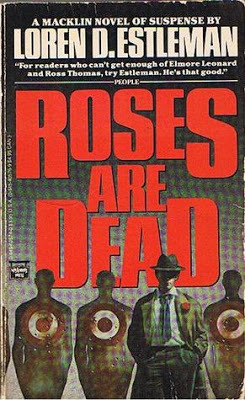 Black and White Ballmoves along at a speedy pace and was satisfying enough to make me want to reread the early Macklin series and also pick up the two Macklin books I missed. However, what I really want to read is a tale in which Macklin, Keller, and Quarry collide in a hitman vs hitman vs hitman scenario. You could take my money now for that story.
Black and White Ballmoves along at a speedy pace and was satisfying enough to make me want to reread the early Macklin series and also pick up the two Macklin books I missed. However, what I really want to read is a tale in which Macklin, Keller, and Quarry collide in a hitman vs hitman vs hitman scenario. You could take my money now for that story. THE MACKLIN SERIES
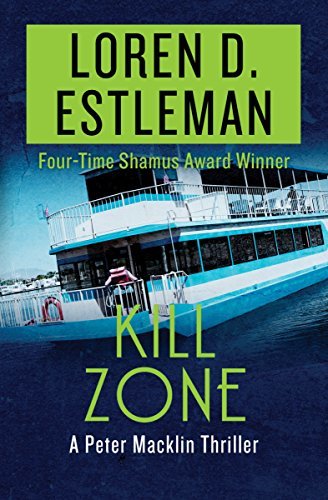 KILL ZONE
KILL ZONEA terrorist group comprised of a killer, a bassist, an ex-marine, a demolitions expert, a Black Panther, a national guardsman, and a couple of spoiled teenagers, are about to become Detroit’s worst nightmare. Armed with M16s and enough explosives to burn the city down, the dangerously volatile gang takes a tour boat with eight hundred passengers hostage on Lake Erie—and if they don’t get what they want, they will kill every soul aboard...Rescue is impossible. No cop could get on the boat. The only man with the skills for the job is Peter Macklin, a professional killer with ties to the local mob. Hired by the FBI bureau chief to sneak aboard the ship and destroy the terrorist crew from the inside out, Macklin finds killers not only in front of him, but also coming up fast from behind.
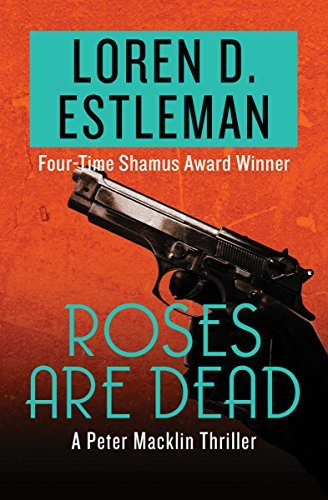 ROSES ARE DEADMacklin has problems—His wife is divorcing him, his kid is on drugs, and the Mob wants him dead. For years, Macklin’s wife Donna ignored the guns in his safe, his long hours, and all the cash he couldn’t possibly have made as an efficiency expert. When she is finally forced to admit Macklin is a killer for hire, Donna wants a divorce—and she wants to take Macklin for all he’s worth. But she won’t get a penny if he’s dead...Macklin realizes the Detroit mob has turned on him, and they’ll keep sending assassins until he’s cold in the ground. He’ll have to kill like never before—or he won’t live to make his first alimony payment.
ROSES ARE DEADMacklin has problems—His wife is divorcing him, his kid is on drugs, and the Mob wants him dead. For years, Macklin’s wife Donna ignored the guns in his safe, his long hours, and all the cash he couldn’t possibly have made as an efficiency expert. When she is finally forced to admit Macklin is a killer for hire, Donna wants a divorce—and she wants to take Macklin for all he’s worth. But she won’t get a penny if he’s dead...Macklin realizes the Detroit mob has turned on him, and they’ll keep sending assassins until he’s cold in the ground. He’ll have to kill like never before—or he won’t live to make his first alimony payment. 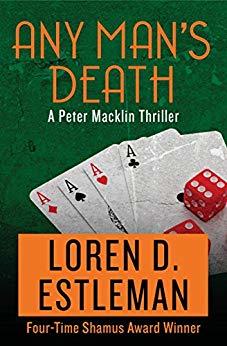 ANY MAN'S DEATHThe Reverend Thomas Aquinas Sunsmith is halfway through his sermon when killers open fire. He is preaching against the evils of gambling, which a cartel of mobsters is trying to legalize in Detroit. The hail of gunfire misses the reverend, but a choir member is cut down—the first victim in the battle for the soul of the Motor City. The Detroit mob has erupted into civil war, and professional killer Peter Macklin is caught in the middle. A former mob employee, he has since tried to stay away from the savagery of organized crime, but now they’re offering him a job too tempting to refuse. The mob will kill whomever it takes to bring gambling to Detroit, and Macklin is about to discover their secret weapon: a seventeen-year-old prodigy assassin, who happens to be Macklin’s own son.
ANY MAN'S DEATHThe Reverend Thomas Aquinas Sunsmith is halfway through his sermon when killers open fire. He is preaching against the evils of gambling, which a cartel of mobsters is trying to legalize in Detroit. The hail of gunfire misses the reverend, but a choir member is cut down—the first victim in the battle for the soul of the Motor City. The Detroit mob has erupted into civil war, and professional killer Peter Macklin is caught in the middle. A former mob employee, he has since tried to stay away from the savagery of organized crime, but now they’re offering him a job too tempting to refuse. The mob will kill whomever it takes to bring gambling to Detroit, and Macklin is about to discover their secret weapon: a seventeen-year-old prodigy assassin, who happens to be Macklin’s own son.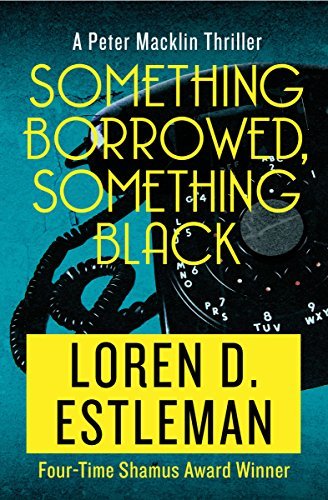 SOMETHING BORROWEDSOMETHING BLACK Davis has just left the Alamo when he feels the garrote wrap around his neck. The bookie slams his foot on the gas, sending the car into oncoming traffic. It bounces off a van, hops the curb, and crashes into a hotel, knocking Davis unconscious and breaking the neck of his would-be assassin. Davis can breathe again, but just for a moment. When the mob wants you dead, they’ll always send another killer...The only man for the job is Peter Macklin, a veteran killer who’s trying to put his old life behind him. He’s just married Laurie, a beautiful, innocent young woman who believes her husband is a salesman. They’re on their honeymoon in Los Angeles when he gets the call, and it’s a gig he can’t refuse. Macklin is going to Texas for a battle so tough it will make the Alamo look like a fair fight.
SOMETHING BORROWEDSOMETHING BLACK Davis has just left the Alamo when he feels the garrote wrap around his neck. The bookie slams his foot on the gas, sending the car into oncoming traffic. It bounces off a van, hops the curb, and crashes into a hotel, knocking Davis unconscious and breaking the neck of his would-be assassin. Davis can breathe again, but just for a moment. When the mob wants you dead, they’ll always send another killer...The only man for the job is Peter Macklin, a veteran killer who’s trying to put his old life behind him. He’s just married Laurie, a beautiful, innocent young woman who believes her husband is a salesman. They’re on their honeymoon in Los Angeles when he gets the call, and it’s a gig he can’t refuse. Macklin is going to Texas for a battle so tough it will make the Alamo look like a fair fight.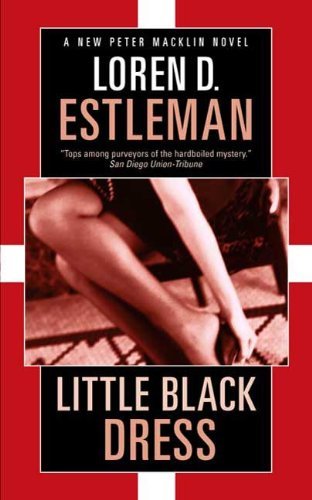 LITTLE BLACK DRESSWhat happens when a hitman meets his mother-in-law? Peter Macklin was a hit man for a long time but he has taken steps to distance himself from his tattooed past, like quitting the mob, moving away from Detroit, and marrying the gorgeous, intelligent Laurie. But retirement isn't easy for an ex-hit man. Now the man accustomed to killing people in cold blood must adjust to a sadistic ritual of early marriage—spending time with his eccentric mother-in-law. When Macklin discovers his mother-in-law's boyfriend Benjamin Grinnell has a hit out on him, it quickly becomes clear Grinnell's jeopardy endangers both Macklin’s mother-in law and his new wife.
LITTLE BLACK DRESSWhat happens when a hitman meets his mother-in-law? Peter Macklin was a hit man for a long time but he has taken steps to distance himself from his tattooed past, like quitting the mob, moving away from Detroit, and marrying the gorgeous, intelligent Laurie. But retirement isn't easy for an ex-hit man. Now the man accustomed to killing people in cold blood must adjust to a sadistic ritual of early marriage—spending time with his eccentric mother-in-law. When Macklin discovers his mother-in-law's boyfriend Benjamin Grinnell has a hit out on him, it quickly becomes clear Grinnell's jeopardy endangers both Macklin’s mother-in law and his new wife.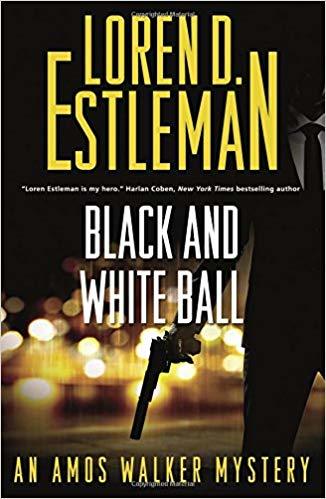 BLACK AND WHITE BALLDetroit hit man Peter Macklin forces private eye Amos Walker to furnish protection for Laurie, Macklin's estranged wife, while Macklin tracks down the party who has threatened to kill her. The man Walker’s client suspects cannot be ignored—his own grown son, Roger Macklin, who has inherited all his father’s killer instincts, and has all the training necessary to carry out his threat.
BLACK AND WHITE BALLDetroit hit man Peter Macklin forces private eye Amos Walker to furnish protection for Laurie, Macklin's estranged wife, while Macklin tracks down the party who has threatened to kill her. The man Walker’s client suspects cannot be ignored—his own grown son, Roger Macklin, who has inherited all his father’s killer instincts, and has all the training necessary to carry out his threat.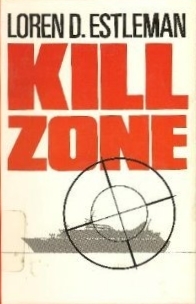

Published on December 04, 2019 18:22
EVA—MEN’S ADVENTURE SUPERMODEL
 EVA MEN’S ADVENTURE SUPERMODELI am a huge fan of the heyday of the men’s adventure magazines with the lurid and garishly illustrated covers that proliferated on the newsstands from the late forties through the seventies. More specifically, I’m fascinated by the writers who produced the incredible array of stories on battered typewriters, the cover artists who understood the over the top nature of the scenes they were depicting, the models who provided the inspiration for the action poses, and the editors who came up with the outrageous story titles and cover banners—all of which were the sizzle that made the almost exclusively male audience plunk down their hard earned cash.
EVA MEN’S ADVENTURE SUPERMODELI am a huge fan of the heyday of the men’s adventure magazines with the lurid and garishly illustrated covers that proliferated on the newsstands from the late forties through the seventies. More specifically, I’m fascinated by the writers who produced the incredible array of stories on battered typewriters, the cover artists who understood the over the top nature of the scenes they were depicting, the models who provided the inspiration for the action poses, and the editors who came up with the outrageous story titles and cover banners—all of which were the sizzle that made the almost exclusively male audience plunk down their hard earned cash.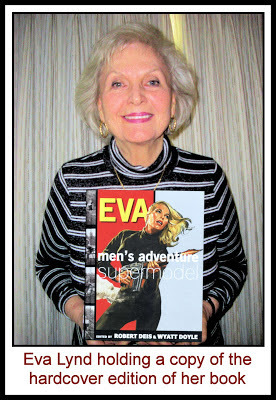 The history of the men’s adventure magazines has been saved from the obscurity of cultural disdain by a handful of brave chroniclers and a dedicated gaggle of obsessive collectors. Among the leaders in both categories is Bob Deis who, along with his co-editor and partner in crime Wyatt Doyle, produce the most important and beautifully presented men’s adventure genre related books currently being published.
The history of the men’s adventure magazines has been saved from the obscurity of cultural disdain by a handful of brave chroniclers and a dedicated gaggle of obsessive collectors. Among the leaders in both categories is Bob Deis who, along with his co-editor and partner in crime Wyatt Doyle, produce the most important and beautifully presented men’s adventure genre related books currently being published. Under the banner of The Men’s Adventure Library, Deis and Doyle have done yeoman work editing and publishing such titles as Weasels Ripped My Flesh (the classic men’s adventure tale and similar stories), A Handful of Hell (war adventures by the brilliant Robert F. Dorr), Barbarians On Bikes (outlaw bikers, broads, and bullets), Cryptozoology (stories of strange beasts that were a staple of the men’s adventure mags), He-Men, Bag Men, and Nymphos (stories by the endlessly creative Walter Kaylin), and two books filled with the amazing art of Samson Pollen (Pollen’s Action and Pollen’s Women).
Under the banner of The Men’s Adventure Library, Deis and Doyle have done yeoman work editing and publishing such titles as Weasels Ripped My Flesh (the classic men’s adventure tale and similar stories), A Handful of Hell (war adventures by the brilliant Robert F. Dorr), Barbarians On Bikes (outlaw bikers, broads, and bullets), Cryptozoology (stories of strange beasts that were a staple of the men’s adventure mags), He-Men, Bag Men, and Nymphos (stories by the endlessly creative Walter Kaylin), and two books filled with the amazing art of Samson Pollen (Pollen’s Action and Pollen’s Women). Their most recent effort, however, is quite possibly my favorite. Eva, Men’s Adventure Supermodel is a loving tribute to actress/model/singer/writer Eva Lynd—a woman who is without question men’s adventure magazine royalty. A blonde Swedish countess, Eva modeled for many of the most eye-popping men’s adventure magazine covers and interior illustrations, often posing with the legendary male model, Steve Holland.
Their most recent effort, however, is quite possibly my favorite. Eva, Men’s Adventure Supermodel is a loving tribute to actress/model/singer/writer Eva Lynd—a woman who is without question men’s adventure magazine royalty. A blonde Swedish countess, Eva modeled for many of the most eye-popping men’s adventure magazine covers and interior illustrations, often posing with the legendary male model, Steve Holland. She was the top model of choice for the best of the era’s cover artists and glamour/pin-up photographers. As an actress, she appeared alongside some of the biggest names in movies and television of the time. A woman of grace and talent, Eva is an icon of 20th century popular culture unlike any other.
She was the top model of choice for the best of the era’s cover artists and glamour/pin-up photographers. As an actress, she appeared alongside some of the biggest names in movies and television of the time. A woman of grace and talent, Eva is an icon of 20th century popular culture unlike any other. Capturing Eva’s story in her own words, Eva: Men’s Adventure Supermodel is lavishly filled with illustrations by from such masters artists as Norm Eastman, Al Rossi, Mike Ludlow, and James Bama—all featuring Eva in glorious action. There is also an array of never before seen pin-ups and previously unpublished photos drawn from Eva's personal archive, making this a must have.
Capturing Eva’s story in her own words, Eva: Men’s Adventure Supermodel is lavishly filled with illustrations by from such masters artists as Norm Eastman, Al Rossi, Mike Ludlow, and James Bama—all featuring Eva in glorious action. There is also an array of never before seen pin-ups and previously unpublished photos drawn from Eva's personal archive, making this a must have. The hardcover presentation version of Eva: Men's Adventure Supermodel contains an abundance of exclusive material not available in the softcover, but either edition is an excellent choice for fans of the men’s adventure magazine genre.
The hardcover presentation version of Eva: Men's Adventure Supermodel contains an abundance of exclusive material not available in the softcover, but either edition is an excellent choice for fans of the men’s adventure magazine genre.





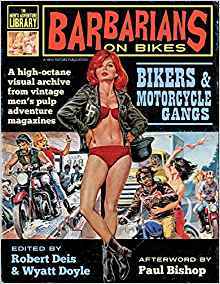


Published on December 04, 2019 10:25
December 3, 2019
VINTAGE WESTERN NOVELS—FARGO
 VINTAGE WESTERN NOVELSFARGO Neal Fargo—adventurer, lover and fighter. He lives with a gun in one fist and a stick of lighted dynamite in the other. Want to start a revolution? Want to stop one? Send for Fargo. Want to blow a bridge, stage a prison break, rob a bank? Get Fargo. Tall and weather beaten, he still wears much the same outfit he wore in the service—cavalry boots, campaign hat, jodhpurs, or khaki pants, comfortable shirt.
VINTAGE WESTERN NOVELSFARGO Neal Fargo—adventurer, lover and fighter. He lives with a gun in one fist and a stick of lighted dynamite in the other. Want to start a revolution? Want to stop one? Send for Fargo. Want to blow a bridge, stage a prison break, rob a bank? Get Fargo. Tall and weather beaten, he still wears much the same outfit he wore in the service—cavalry boots, campaign hat, jodhpurs, or khaki pants, comfortable shirt.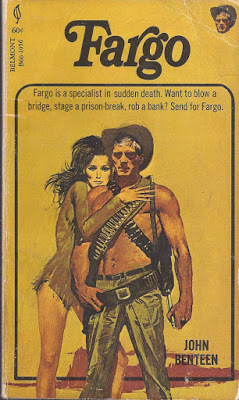 His weapons of war include a .38 in either a hip or shoulder holster and loaded with hollow points for greater stopping power. He also carries a razor sharp Batangas knife made by Philippine artisans, its ten inch blade flashing open with the flick of a wrist.
His weapons of war include a .38 in either a hip or shoulder holster and loaded with hollow points for greater stopping power. He also carries a razor sharp Batangas knife made by Philippine artisans, its ten inch blade flashing open with the flick of a wrist.His favorite weapon, however, is the Fox Sterlingworth ten-gauge shotgun, sawed-off, and engraved along the inlay with the words, To Neal Fargo, gratefully, from T. Roosevelt. It's a deadly piece, loaded with shells of nine buckshot each. Roosevelt remains the only man for whom Fargo will drop everything and come running when needed.
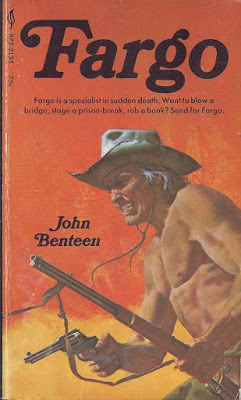 The Army taught Fargo how to kill with pistols, rifles, and machine guns. He became an expert with knives, shotguns, and women on his own time. If Fargo had a credo it was this:Be on the winning side…
The Army taught Fargo how to kill with pistols, rifles, and machine guns. He became an expert with knives, shotguns, and women on his own time. If Fargo had a credo it was this:Be on the winning side… During the course of his career, author Ben Haas wrote 130 novels under his own name, a dozen pseudonyms (including John Benteen), and a handful of publisher’s house names. The uniting factor of this vast output was the highly readable, sheer storytelling force he brought to every page.
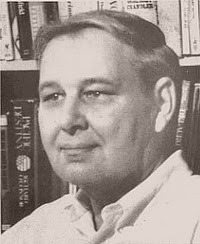 Beginning his career writing paperback original westerns, Haas quickly developed the spare, fast-paced, muscular prose for which he became known. When Tower Books publisher Harry Shorten asked Haas to create an original western series, Haas responded by letting loose the taciturn, granite-hard, Neal Fargo in a series of neo-westerns now considered classics of the genre.
Beginning his career writing paperback original westerns, Haas quickly developed the spare, fast-paced, muscular prose for which he became known. When Tower Books publisher Harry Shorten asked Haas to create an original western series, Haas responded by letting loose the taciturn, granite-hard, Neal Fargo in a series of neo-westerns now considered classics of the genre.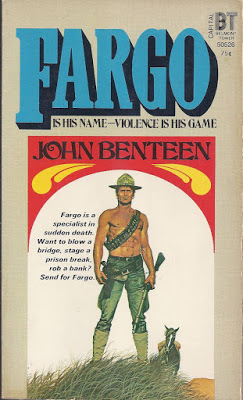 One of the most enjoyable aspects about Fargo and the other books in the series is they go beyond the scope of time-honored Westerns. Each one retains the structure of more traditional westerns, but take place in not only the west, but also in such diverse locations such as the Philippines, Argentina, Nicaragua, Alaska, and Peru. This distinction is part of the fun and makes Fargo stand out among his contemporaries.
One of the most enjoyable aspects about Fargo and the other books in the series is they go beyond the scope of time-honored Westerns. Each one retains the structure of more traditional westerns, but take place in not only the west, but also in such diverse locations such as the Philippines, Argentina, Nicaragua, Alaska, and Peru. This distinction is part of the fun and makes Fargo stand out among his contemporaries.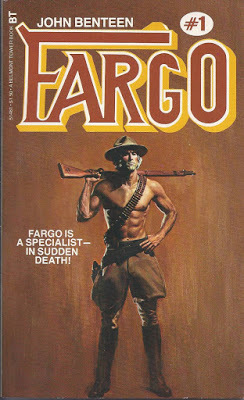 Under the pseudonym John Benteen—named after one of Custer’s cavalry officers—Haas wrote (or co-wrote with his son, Joel) twenty of the twenty three Fargo adventures. The other three books in the series (Sierra Silver, Dynamite Fever, and Gringo Guns) are attributed to John W. Hardin—a pseudonym taken from a real life outlaw. The man behind the mask of John W. Hardin was most likely Norman Rubington, a prolific hack writer who also wrote an entry in Benteen’s popular Sundance series.
Under the pseudonym John Benteen—named after one of Custer’s cavalry officers—Haas wrote (or co-wrote with his son, Joel) twenty of the twenty three Fargo adventures. The other three books in the series (Sierra Silver, Dynamite Fever, and Gringo Guns) are attributed to John W. Hardin—a pseudonym taken from a real life outlaw. The man behind the mask of John W. Hardin was most likely Norman Rubington, a prolific hack writer who also wrote an entry in Benteen’s popular Sundance series.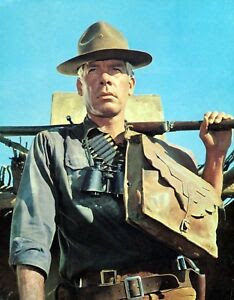 Common consensus is Haas based Fargo on the character portrayed by Lee Marvin in the 1966 movie The Professionals, written by Richard Brooks and based on the novel A Mule for the Marquesa by another popular western wordslinger, Frank O’Rourke. However, O’Rourke would later co-opt some of Fargo’s characteristics and time period for his hero Andres Shotgun Arau in his 1976 novel The Shotgun Man.
Common consensus is Haas based Fargo on the character portrayed by Lee Marvin in the 1966 movie The Professionals, written by Richard Brooks and based on the novel A Mule for the Marquesa by another popular western wordslinger, Frank O’Rourke. However, O’Rourke would later co-opt some of Fargo’s characteristics and time period for his hero Andres Shotgun Arau in his 1976 novel The Shotgun Man.
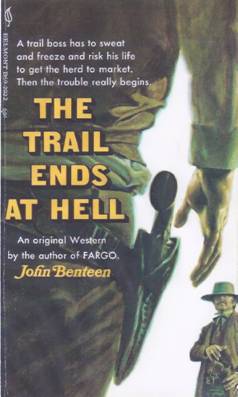

Published on December 03, 2019 19:49
December 2, 2019
THE SAND SHOCKERS
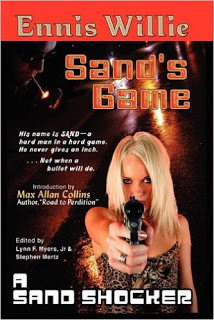 THE SAND SHOCKERS
THE SAND SHOCKERS One of the toughest tough guys in men’s adventure fiction is Ennis Willie’s Sand—A former crime lord with a price on his head, an army of hit men on his back, and a .45 riding in a shoulder rig under his arm to do his talking. A man alone, with few friends and many hates. There is nowhere to hide…and it's too late to pray..
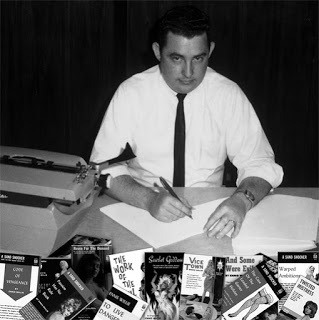 Short, terse, full of sex and graphic violence, the Sand Shockers, took their cue from Richard Stark’s far better known Parker novels. But Sand is far more than an imitation Parker. Sand’s violent cross-country crusade to break from his past as a mob hitman and rectify past wrongs—killing a morgue-full of minions and former mob bosses without qualms in the process—forms the template followed a decade later by Donald Pendleton’s Mack Bolan The Executioner series and its myriad of imitators.
Short, terse, full of sex and graphic violence, the Sand Shockers, took their cue from Richard Stark’s far better known Parker novels. But Sand is far more than an imitation Parker. Sand’s violent cross-country crusade to break from his past as a mob hitman and rectify past wrongs—killing a morgue-full of minions and former mob bosses without qualms in the process—forms the template followed a decade later by Donald Pendleton’s Mack Bolan The Executioner series and its myriad of imitators.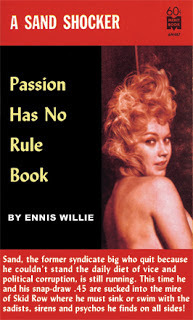 Ennis Willie wrote many novels published by the low-circulation sleaze imprint Merit Books in Chicago. Merit also published the nine Sand novels, but the distribution of Merit’s books was erratic at best, condemning the Sand Shockers to obscurity. However, the inner circle of hardboiled fanatics—in particular Stephen Mertz and Ed Gorman—have kept Sand’s flame alive, ensuring his continuing legacy.
Ennis Willie wrote many novels published by the low-circulation sleaze imprint Merit Books in Chicago. Merit also published the nine Sand novels, but the distribution of Merit’s books was erratic at best, condemning the Sand Shockers to obscurity. However, the inner circle of hardboiled fanatics—in particular Stephen Mertz and Ed Gorman—have kept Sand’s flame alive, ensuring his continuing legacy.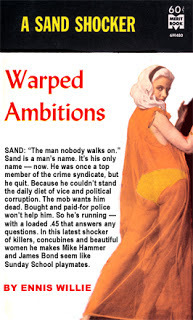 A hardboiled icon in his own right, Max Allan Collins acknowledges his series featuring tough crook Nolan and his later series with calculating hitman Quarry were inspired by Sand. Regarding Ennis Willie the writer, Collins declares, Among American writers, only one caught Mickey Spillane's magic—only one managed to create a fever-dream world of sadistic gangsters, willing women and larger-than-life tough guys.
A hardboiled icon in his own right, Max Allan Collins acknowledges his series featuring tough crook Nolan and his later series with calculating hitman Quarry were inspired by Sand. Regarding Ennis Willie the writer, Collins declares, Among American writers, only one caught Mickey Spillane's magic—only one managed to create a fever-dream world of sadistic gangsters, willing women and larger-than-life tough guys. 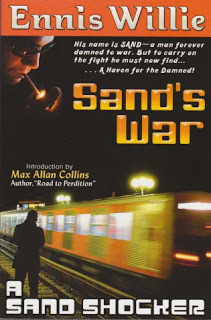 THE SAND SHOCKERS Scarlet Goddess Aura Of Sensuality Haven For The DamnedGame Of Passion And Some Were Evil Warped Ambition The Case Of The Loaded Garter HolsterPassion Has No Rule BookCode of Vengeance
THE SAND SHOCKERS Scarlet Goddess Aura Of Sensuality Haven For The DamnedGame Of Passion And Some Were Evil Warped Ambition The Case Of The Loaded Garter HolsterPassion Has No Rule BookCode of Vengeance 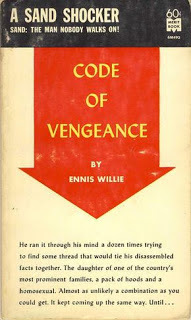
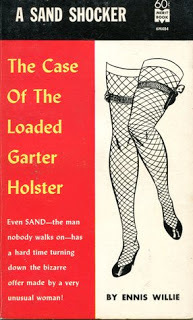 The original Sand novels are incredibly rare and expensive, however, Ramble House has resurrected a number of Sand tales in two readily available collections, Sand’s Game and Sand’s War.
The original Sand novels are incredibly rare and expensive, however, Ramble House has resurrected a number of Sand tales in two readily available collections, Sand’s Game and Sand’s War.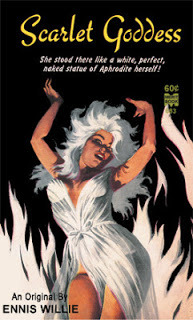
Published on December 02, 2019 16:03
STICKING IT TO THE MAN
 STICKING IT TO THE MAN
STICKING IT TO THE MAN I can't express how much I enjoyment I received from reading every page of Sticking It To The Man—Revolution and the Counter Culture in Pulp and Popular Fiction, 1950 to 1980. I can’t recommend it highly enough. Fascinating, well written, filled with an amazing array of beautifully reproduced vintage paperback covers, and endlessly entertaining subject matter. This endorsement should be more than enough for those of you who know me—and know I don’t gush over much—to delay reading further and immediately swing over to your chosen Internet book source or head out to your favorite independent bookstore and order a copy.
Don’t worry, I’ll wait...
Stop reading...Go order...I said, I’ll wait...
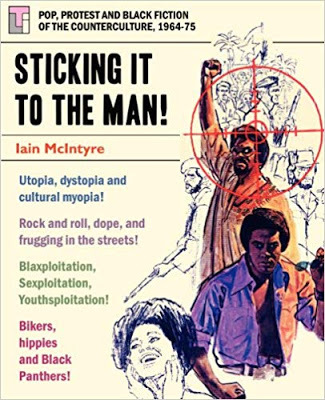 Okay...You’re back...If you’re into instant gratification and downloaded your copy of Sticking It To The Man, feel free to skip out on this post and jump right in to the electronic pages of a book you’re going to find way more interesting. If you’re old school and have to wait for your copy to be delivered, you’re welcome to hang out, but hold on ‘cause I’m gonna drag you down a rabbit hole...
Okay...You’re back...If you’re into instant gratification and downloaded your copy of Sticking It To The Man, feel free to skip out on this post and jump right in to the electronic pages of a book you’re going to find way more interesting. If you’re old school and have to wait for your copy to be delivered, you’re welcome to hang out, but hold on ‘cause I’m gonna drag you down a rabbit hole...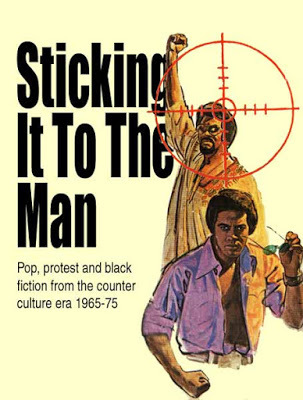 Having spent thirty five years serving with the Los Angeles Police Department, there is no doubt the counter culture of the '60s and '70s would have seen me as The Man. Not as in you da man, but as in the jackbooted, oppressive, heavy-handed authority figure and violent stooge who needs to be eliminated in the coming radical civil war. You know—The Man who needs sticking it to.
Having spent thirty five years serving with the Los Angeles Police Department, there is no doubt the counter culture of the '60s and '70s would have seen me as The Man. Not as in you da man, but as in the jackbooted, oppressive, heavy-handed authority figure and violent stooge who needs to be eliminated in the coming radical civil war. You know—The Man who needs sticking it to.Fortunately, that stereotype is as false and prejudicial as most stereotypes, but you still might not think I'm the intended target audience for a scholarly, yet eminently readable reference tome entitled, Sticking It to the Man: Revolutions and Counterculture in Pulp and Popular Fiction, 1950 to 1980.
You would be wrong...
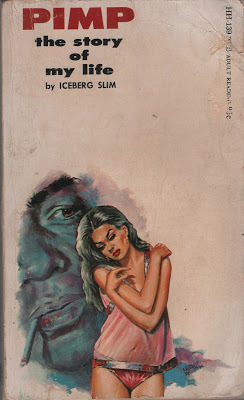 I was fifteen years old when I first read Pimp by Iceberg Slim. A voracious reader of everything I could find at the library or stretch my very limited budget to buy off the spinner racks. I haunted a regular round of bookstores and other retailers who stocked shelves of paperbacks.
I was fifteen years old when I first read Pimp by Iceberg Slim. A voracious reader of everything I could find at the library or stretch my very limited budget to buy off the spinner racks. I haunted a regular round of bookstores and other retailers who stocked shelves of paperbacks.Occasionally, I found my way to an old fashioned open air newsstand on the corner of White Oak and Ventura Boulevard in the San Fernando Valley. There, perilously close to the forbidden section containing dirty magazines and sleazy books of a questionable moral nature, was a double row of what appeared to be angry Black-centric paperbacks.
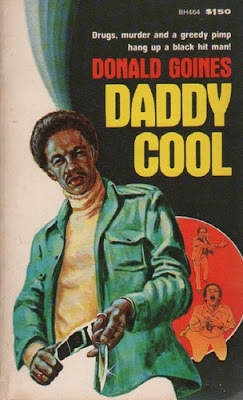 These always fascinated me. The books were new, but exposure to the open air had turned their covers grubby and slightly warped the interior pages. Still, they seemed to call to me with an illicit promise of exposure to another world I vaguely knew existed, but had never experienced.
These always fascinated me. The books were new, but exposure to the open air had turned their covers grubby and slightly warped the interior pages. Still, they seemed to call to me with an illicit promise of exposure to another world I vaguely knew existed, but had never experienced.Most of these paperbacks were produced by Holloway House, a shabby down market publisher with a shady reputation. I was totally unaware at the time of Holloway House’s ironic nature—being run by two white publishers who saw the uprisings in Watts and other black neighborhoods across the country as a crisis of representation...a cultural void they could profit from by publishing cheap mass-market paperbacks targeted specifically toward a black working-class readership.
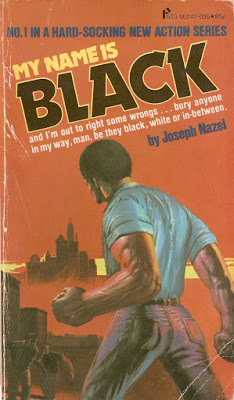 As a fifteen year old white kid, I only knew Holloway House’s shabby bindings, cockeyed cover printing, and poorly chosen graphics lived in a world total different to the traditionally published paperbacks I was used to reading—where James Bond was considered risqué.
As a fifteen year old white kid, I only knew Holloway House’s shabby bindings, cockeyed cover printing, and poorly chosen graphics lived in a world total different to the traditionally published paperbacks I was used to reading—where James Bond was considered risqué.Books by Iceberg Slim and his protégé Donald Goines dominated the small selection alongside the lurid pulp-style covers of men's adventure series featuring Black anti-heroes such as Radcliff, The Iceman, Kenyatta, and Joseph Nazel's pointedly named character, Black. And hidden deep in the mix were Chester Himes’ blacker than black cops Coffin Ed and Gravedigger Jones—two police detectives constantly caught between two worlds and accepted in neither.
 I found myself compelled to buy a copy of Iceberg Slim's Pimp. Maybe it was my own questioning counter culture leanings. Maybe it was the driving quest I'd had from a young age to seek out the authentic otherness of cultures outside of my own white bread existence. Maybe, at fifteen, I was being seduced by books reeking with the promise of something dangerous and purient—something not to be caught reading by judgmental adults.
I found myself compelled to buy a copy of Iceberg Slim's Pimp. Maybe it was my own questioning counter culture leanings. Maybe it was the driving quest I'd had from a young age to seek out the authentic otherness of cultures outside of my own white bread existence. Maybe, at fifteen, I was being seduced by books reeking with the promise of something dangerous and purient—something not to be caught reading by judgmental adults. 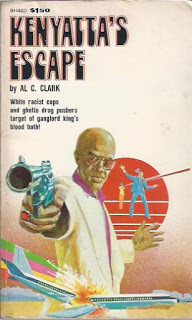 Whatever it was, I plunked my money down on the counter. The grubby, unshaven clerk gave me the stink eye, but never the less rang up my purchase. Smuggling the book home, I cracked open its pages as I sat on the floor of my bedroom with the door closed and the light low—life was never the same again.
Whatever it was, I plunked my money down on the counter. The grubby, unshaven clerk gave me the stink eye, but never the less rang up my purchase. Smuggling the book home, I cracked open its pages as I sat on the floor of my bedroom with the door closed and the light low—life was never the same again.An only child, I immigrated to America from Britain when I was eight. I had a prissy English accent, prissy English manners, and my bi-polar mother insisted on dressing me like Little Lord Fauntleroy—I am not exaggerating. You can imagine what going to school was like for me in the late sixties surrounded by California kids who were either cool surfers or hard-edged greasers. Yeah, you get the picture. I’m not whining, but it weren’t pretty. I was intimately familiar with the inside of school lockers and trashcans on the quad.
 However, in the pages of cheap garish paperbacks by Iceberg Slim, Donald Goines, and Joseph Nazel, I found a connection to the experiences of another culture which was also getting its ass kicked—they were the crack in the door opening me to a whole different cultural world view. And then there was the startling reality of the character’s representing the downtrodden cultures in those books refusing to back down and being ready to fight.
However, in the pages of cheap garish paperbacks by Iceberg Slim, Donald Goines, and Joseph Nazel, I found a connection to the experiences of another culture which was also getting its ass kicked—they were the crack in the door opening me to a whole different cultural world view. And then there was the startling reality of the character’s representing the downtrodden cultures in those books refusing to back down and being ready to fight.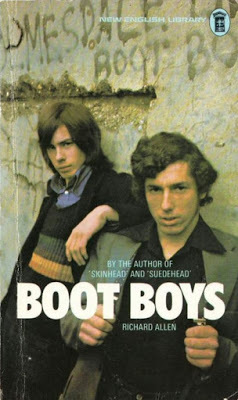 At the same time I was discovering the words of Iceberg Slim and Joseph Nazel, I also fell into the vast array of sordid NEL (New English Library) paperbacks, which exploited any and every radical, rebellious, angry British youth subculture from skinheads to boot boys to terrace terrors to mods and rockers, and more. These took a little finding, but on trips back to Blighty, I trolled the used bookstalls at the open air markets in London and regularly stashed a supply in my suitcase when returning to California.
At the same time I was discovering the words of Iceberg Slim and Joseph Nazel, I also fell into the vast array of sordid NEL (New English Library) paperbacks, which exploited any and every radical, rebellious, angry British youth subculture from skinheads to boot boys to terrace terrors to mods and rockers, and more. These took a little finding, but on trips back to Blighty, I trolled the used bookstalls at the open air markets in London and regularly stashed a supply in my suitcase when returning to California.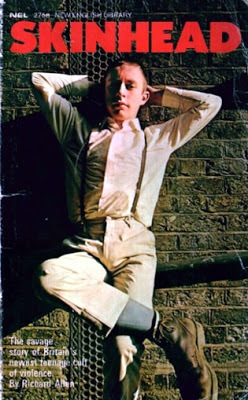 In both the black pulps and the low-end British trash novels, I found a weird sort of encouragement. Like the characters in these books, I was tired of taking crap and made a conscious decision to fight back. If I was going to get my fifteen year old ass kicked anyway, I might as well do as much damage going down as I could.
In both the black pulps and the low-end British trash novels, I found a weird sort of encouragement. Like the characters in these books, I was tired of taking crap and made a conscious decision to fight back. If I was going to get my fifteen year old ass kicked anyway, I might as well do as much damage going down as I could.After collecting enough bruises to fill an emergency room, I eventually learned to fight—and fight dirty (it’s amazing how much harder you can hit with a roll of nickels in your fist). I became intimately familiar with the principal’s office, but somehow never got expelled—mostly due to selectively reverting back to my prissy accent and prissy manners when needed. I began dishing out more damage than I took, and it didn’t take long before the bullying predators went in search of easier prey.
My reputation stuck. When my wife forced me to go to our 20th high school reunion, the first three classmates we encountered looked at me and said, “Oh, you were the kid in all the fights.” Yeah, that was me.
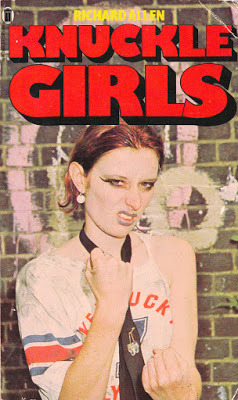 There was another surprising layer to many of the works that mainstream society dismissed as not worth the paper to publish. Some of the authors were screaming out their rage and pain on the page. Others were simply trying to make a buck in a hustler’s world. Whether consciously or subconsciously, their stories of fighting back, of fighting for self-respect (or their world’s version of self-respect), there was also a thread that spoke to righting wrongs and protecting others who couldn’t protect themselves.
There was another surprising layer to many of the works that mainstream society dismissed as not worth the paper to publish. Some of the authors were screaming out their rage and pain on the page. Others were simply trying to make a buck in a hustler’s world. Whether consciously or subconsciously, their stories of fighting back, of fighting for self-respect (or their world’s version of self-respect), there was also a thread that spoke to righting wrongs and protecting others who couldn’t protect themselves.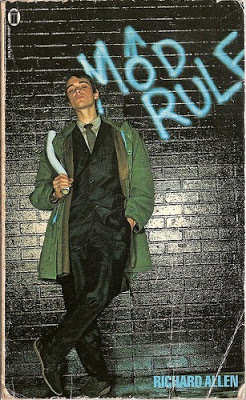 In my autodidactic way, exposure to these fictional counter culture pulp radicals led me to read Malcom X, Lenny Bruce, Martin Luther King, Gandhi, Budda, and many other real life extremists and activists—all of whom enforced and drove home the message of battling for self-respect and lifting up others in the effort.
In my autodidactic way, exposure to these fictional counter culture pulp radicals led me to read Malcom X, Lenny Bruce, Martin Luther King, Gandhi, Budda, and many other real life extremists and activists—all of whom enforced and drove home the message of battling for self-respect and lifting up others in the effort.This long ramble has been to build the groundwork for why I have been so profoundly moved by the impact of Andrew Nette’s and Iain McIntyre’s Sticking It To The Man has had on me. Within its covers, I was transported back to the raw emotions and desperate struggles I’d first found in Pimp, Whoreson, Swamp Man, Howard Street, A Rage in Harlem, Skinhead, Suedehead, Hooligan, and so many more.
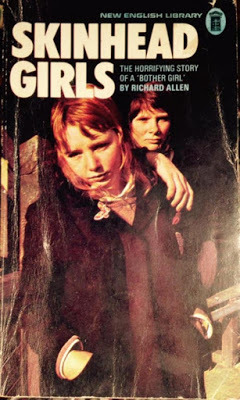 Sticking It To The Manis filled with radical delights—Vietnam fiction, the beginnings of gay and lesbian fiction, paperback original men’s adventure series, retrospectives on Iceberg Slim, Donald Goines, Joseph Nazel, Joseph Hansen, Ernest Tidyman and Shaft—if it was radical and it was captured in paperback between 1950 and 1980 it’s part of Sticking It To The Man.
Sticking It To The Manis filled with radical delights—Vietnam fiction, the beginnings of gay and lesbian fiction, paperback original men’s adventure series, retrospectives on Iceberg Slim, Donald Goines, Joseph Nazel, Joseph Hansen, Ernest Tidyman and Shaft—if it was radical and it was captured in paperback between 1950 and 1980 it’s part of Sticking It To The Man.Finally, circling back to what I learned from radicalized trash fiction. After thirty-five years with the LAPD, I find myself now as a nationally recognized interrogator. I’m good at what I do. Immodestly, I’m very good. Those who I've sat with in an interrogation room have never met a Machiavellian nightmare like me.
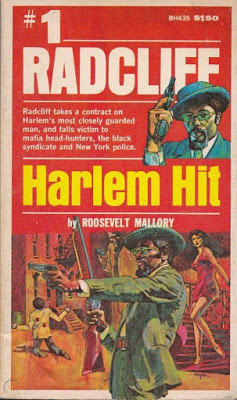 But I got here because of the two most important things radicalized trash fiction taught me.
But I got here because of the two most important things radicalized trash fiction taught me. First, to be an objective enforcer of the law without regard to race, religion, sexual orientation, affiliations, past behaviors, or anything else used to derisively judge another human.
Second, and more importantly, radical trash fiction taught me truth is not a set point...truthis about individual perspective viewed through the lens of the shit that happens to you in life.
The recognition of my quest to understand the nature of truth, and attempt to objectively get as close to it as possible in highly emotional situations, began when I read a book by Iceberg Slim, which I bought from a crap hole newsstand so many years ago. And I’m thankful to Sticking It To The Manfor reminding me where I came from and how I got here today.
Published on December 02, 2019 15:40
November 29, 2019
VINTAGE TV WESTERNS—WANTED DEAD OR ALIVE
 VINTAGE TV WESTERNS WANTED DEAD OR ALIVE Sympathetic bounty hunter Josh Randall (Steve McQueen) made his first appearance on an episode of the Western series Trackdown, which starred McQueen’s old New York motorcycle racing buddy, Robert Culp as a Texas Ranger. Randall’s character was popular enough to be spun-off into his own series, Wanted: Dead or Alive. Randall, of course, was laconic and laid back, often drawling the catchphrase, “Let’s go.” A Civil War veteran, he explained his new job as a bounty hunter saying, If he's got a price on his head, I've got an empty pocket.
VINTAGE TV WESTERNS WANTED DEAD OR ALIVE Sympathetic bounty hunter Josh Randall (Steve McQueen) made his first appearance on an episode of the Western series Trackdown, which starred McQueen’s old New York motorcycle racing buddy, Robert Culp as a Texas Ranger. Randall’s character was popular enough to be spun-off into his own series, Wanted: Dead or Alive. Randall, of course, was laconic and laid back, often drawling the catchphrase, “Let’s go.” A Civil War veteran, he explained his new job as a bounty hunter saying, If he's got a price on his head, I've got an empty pocket. 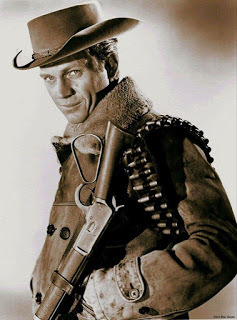 Randall was assisted in his endeavors by his horse, Ringo, and his sawed-off Winchester, known as a mare's laig (or alternatively a mare's leg). The gimmick gun became virtually the co-star of the show. Randall wore it in a customized leg holster, which made it easy for him to use with one hand—It's kinda like a hog's leg but not quite as mean. If I have to use it. I want to get the message across.
Randall was assisted in his endeavors by his horse, Ringo, and his sawed-off Winchester, known as a mare's laig (or alternatively a mare's leg). The gimmick gun became virtually the co-star of the show. Randall wore it in a customized leg holster, which made it easy for him to use with one hand—It's kinda like a hog's leg but not quite as mean. If I have to use it. I want to get the message across.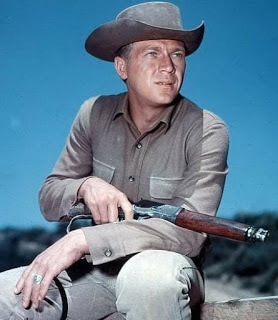 The King of Cool, Steve McQueen, started to developed his reticent antihero persona As Josh Randal in Wanted: Dead Or Alive. The series gave McQueen a springboard to stardom. His first lead actor appearance on the big screen was in the sci-fi movie The Blob, which was filmed shortly before he landed the lead role on Wanted: Dead or Alive.
The King of Cool, Steve McQueen, started to developed his reticent antihero persona As Josh Randal in Wanted: Dead Or Alive. The series gave McQueen a springboard to stardom. His first lead actor appearance on the big screen was in the sci-fi movie The Blob, which was filmed shortly before he landed the lead role on Wanted: Dead or Alive.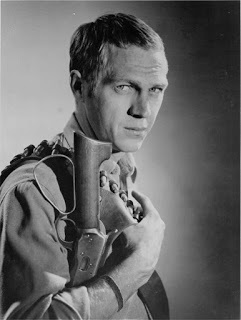 However, The Blobwas not released until after the premiere of the Western series, which was so popular it turned McQueen into a household name. As a result, McQueen’s new fans flocked to see The Blob, turning the movie into a monster hit, grossing $35,000,000 dollars against a budget of $955,000. McQueen was truly on his way.
However, The Blobwas not released until after the premiere of the Western series, which was so popular it turned McQueen into a household name. As a result, McQueen’s new fans flocked to see The Blob, turning the movie into a monster hit, grossing $35,000,000 dollars against a budget of $955,000. McQueen was truly on his way.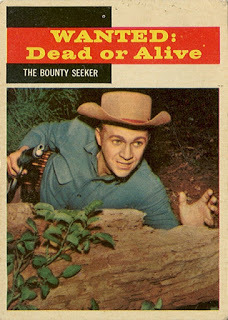 Initially, the creators of the series had a hard time selling the show since movies and television had always portrayed bounty hunters as disreputable characters of dubious morals. Randall, however, despite being as tough as they come, often used part or all of his reward money to help others. He was also known to stand up for his prisoners if he felt they deserved it. These attributes made the character sympathetic, likable, and more than accepted by TV audiences.
Initially, the creators of the series had a hard time selling the show since movies and television had always portrayed bounty hunters as disreputable characters of dubious morals. Randall, however, despite being as tough as they come, often used part or all of his reward money to help others. He was also known to stand up for his prisoners if he felt they deserved it. These attributes made the character sympathetic, likable, and more than accepted by TV audiences.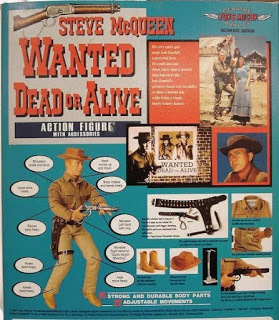 Randall also helped his popularity grow by not only pursuing wanted outlaws. In his travels, he searched for hidden treasure, mediated family feuds, freed the unjustly accused, located missing husbands, sons, fathers, fiancées, Army deserters, a daughter captured by Indians, and even a pet sheep. Despite being a bounty hunter by trade, Randall proved again and again he was more interested in justice and people than in the pursuit of money.
Randall also helped his popularity grow by not only pursuing wanted outlaws. In his travels, he searched for hidden treasure, mediated family feuds, freed the unjustly accused, located missing husbands, sons, fathers, fiancées, Army deserters, a daughter captured by Indians, and even a pet sheep. Despite being a bounty hunter by trade, Randall proved again and again he was more interested in justice and people than in the pursuit of money.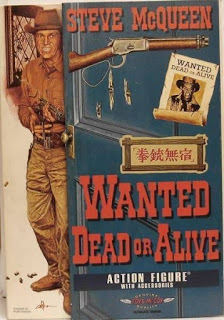 When McQueen was offered a role opposite Yul Brynner in The Magnificent Seven, McQueen desperately wanted the part. He ran into a roadblock, however, when the producers of Wanted: Dead Or Alive would not release him from the series’ shooting schedule. To get around this obstacle, McQueen staged a car accident.
When McQueen was offered a role opposite Yul Brynner in The Magnificent Seven, McQueen desperately wanted the part. He ran into a roadblock, however, when the producers of Wanted: Dead Or Alive would not release him from the series’ shooting schedule. To get around this obstacle, McQueen staged a car accident.Making out his injuries were much worse than they were, the production of Wanted: Dead or Alivewas forced to go on hiatus while McQueen recovered. Apparently, Mexico offered a cure for his ills while coincidentally being the location where The Magnificent Seven was filming. Undercover of his medical leave, McQueen shot the movie before returning to the set of his television show.
 The Mare's Laig McQueen carried was a Winchester model 1892 carbine in 44-40 caliber, but the bullets in McQueen’s cartridge belt were 45-70 caliber. This anachronism was used because the 45-70s were more visually impressive than the relatively small rounds used in the 1892 carbine.
The Mare's Laig McQueen carried was a Winchester model 1892 carbine in 44-40 caliber, but the bullets in McQueen’s cartridge belt were 45-70 caliber. This anachronism was used because the 45-70s were more visually impressive than the relatively small rounds used in the 1892 carbine. 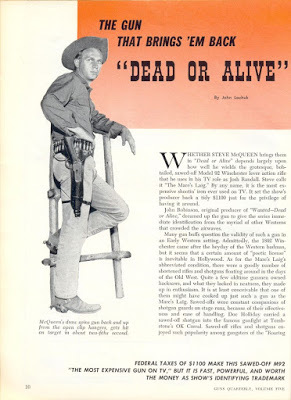 Josh Randall’s trademark gun also provided a launching pad for the merchandising of toys and other products in support of Wanted: Dead or Alive. Toy reproductions of the mare’s laig were sold in a variety of packaging—sometimes with a six-shooter and holster added. There was also a board game, comics, and an original TV tie-in novel. The second most popular item behind the mare’s laig gun as the Josh Randall action figure, which surprisingly actually bore a resemblance to the star of the show.
Josh Randall’s trademark gun also provided a launching pad for the merchandising of toys and other products in support of Wanted: Dead or Alive. Toy reproductions of the mare’s laig were sold in a variety of packaging—sometimes with a six-shooter and holster added. There was also a board game, comics, and an original TV tie-in novel. The second most popular item behind the mare’s laig gun as the Josh Randall action figure, which surprisingly actually bore a resemblance to the star of the show. 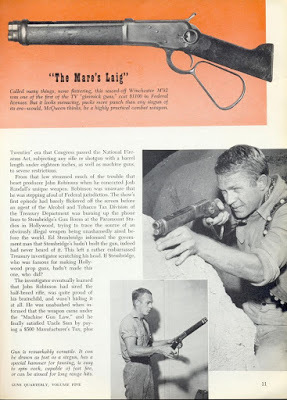 In 1968, Wanted: Dead or Alive was rebooted as a feature film. The movie starred Rutger Hauer as Nick Randall, a Los Angeles-based bounty hunter and ex-CIA operative, who is a descendant of the character Josh Randall, played by Steve McQueen in the 1958 television series. The over the top action film co-starred Gene Simmons as a Middle Eastern terrorist. Simmons casting was a surprise, but he did bring a certain amount of talent to the role. Simmons was born in Haifa, Israel, speaks five languages, and as a member of the band KISS was an experienced performer.
In 1968, Wanted: Dead or Alive was rebooted as a feature film. The movie starred Rutger Hauer as Nick Randall, a Los Angeles-based bounty hunter and ex-CIA operative, who is a descendant of the character Josh Randall, played by Steve McQueen in the 1958 television series. The over the top action film co-starred Gene Simmons as a Middle Eastern terrorist. Simmons casting was a surprise, but he did bring a certain amount of talent to the role. Simmons was born in Haifa, Israel, speaks five languages, and as a member of the band KISS was an experienced performer.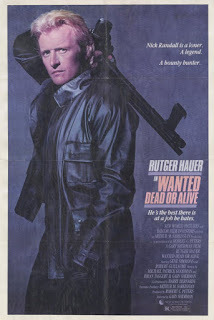 Both James Cann and Mel Gibson had been considered for the part of Nick Randall. The producers settled on Rutger Hauer who reduced his usual fee for a leading part—which meant Caan or Gibson would have been double the price. Being 1987, critics were lukewarm, partly because they were skeptical of the film’s premise—an Arab terrorists coming to the United States and attacking soft targets like a movie theater. They also felt the film owed more to Rambo than the original TV series.
Both James Cann and Mel Gibson had been considered for the part of Nick Randall. The producers settled on Rutger Hauer who reduced his usual fee for a leading part—which meant Caan or Gibson would have been double the price. Being 1987, critics were lukewarm, partly because they were skeptical of the film’s premise—an Arab terrorists coming to the United States and attacking soft targets like a movie theater. They also felt the film owed more to Rambo than the original TV series.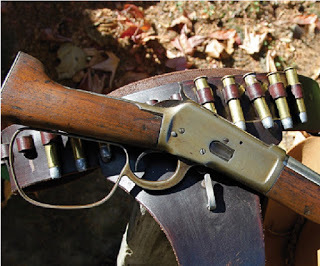 There were, however, ties to the Steve McQueen original, including a specialized weapon—or since a feature film has to be bigger and noisier, a trio of weapons. In the film, Nick Randall carries an H&K P7M13 and a Cold Steel Tanto (knife) along with a shortened Remington 870 shotgun. The latter sported a laser sight activated by the trigger and powered by a battery pack in the grip. The holster was custom made to accommodate both guns.
There were, however, ties to the Steve McQueen original, including a specialized weapon—or since a feature film has to be bigger and noisier, a trio of weapons. In the film, Nick Randall carries an H&K P7M13 and a Cold Steel Tanto (knife) along with a shortened Remington 870 shotgun. The latter sported a laser sight activated by the trigger and powered by a battery pack in the grip. The holster was custom made to accommodate both guns. Also similar to the original series, at the end of the film, Nick Randall gives instructions for his payment to be sent to the family of his onetime partner, whose death sparks the film’s action.

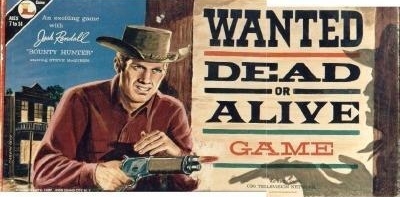
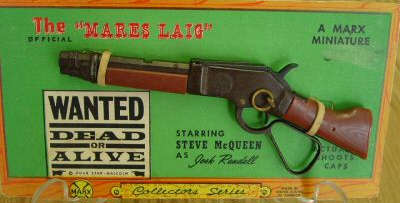

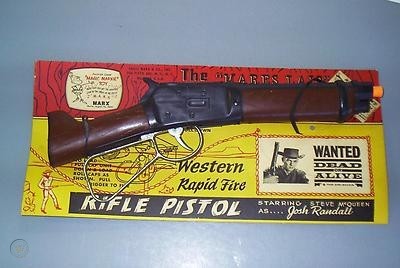







Published on November 29, 2019 16:26
WESTERN WORDSLINGERS—JOHNNY D. BOGGS
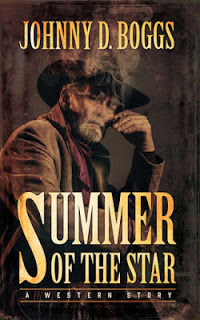
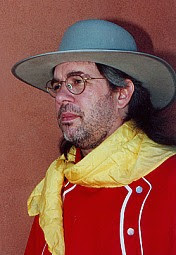 WESTERN WORDSLINGERSJOHNNY D. BOGGS
Johnny D. Boggs is a writer’s writer. He is a professional wordslinger at the top of his trade able to apply his exceptional craft to any literary form. Award winning Western novels, short stories, non-fiction articles, young adult fiction, and more are all within his oeuvre. Since becoming a full-time fiction writer he has won four Spur Awards from the Western Writers of America and a prestigious Western Heritage Wrangler Award.
WESTERN WORDSLINGERSJOHNNY D. BOGGS
Johnny D. Boggs is a writer’s writer. He is a professional wordslinger at the top of his trade able to apply his exceptional craft to any literary form. Award winning Western novels, short stories, non-fiction articles, young adult fiction, and more are all within his oeuvre. Since becoming a full-time fiction writer he has won four Spur Awards from the Western Writers of America and a prestigious Western Heritage Wrangler Award. 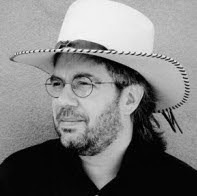 Born in 1962, and growing up on a farm in Timmonsville, South Carolina, Boggs knew he wanted to be a writer at an early age. He also showed an immediate affinity for the business side of writing. Starting in the third grade, Boggs began writing his own stories—featuring archetypical popular characters—and selling them to his classmates. Unexpectedly, his profits outstripped picking peanuts, hanging tobacco, odd-jobs, and other traditional boyhood tasks.
Born in 1962, and growing up on a farm in Timmonsville, South Carolina, Boggs knew he wanted to be a writer at an early age. He also showed an immediate affinity for the business side of writing. Starting in the third grade, Boggs began writing his own stories—featuring archetypical popular characters—and selling them to his classmates. Unexpectedly, his profits outstripped picking peanuts, hanging tobacco, odd-jobs, and other traditional boyhood tasks. Boggs’ love of the Western genre grew from watching Gunsmoke, The Virginian, and other Western TV shows with his dad. A distant Charleston TV station—which could be watched if his family’s TV antenna was positioned just right—showed a lot of Western movies, including John Wayne Theater on Saturday afternoons. It also enabled him to watch and rewatch Gunfight at the OK Corral uncountable times. The West was also “…a long, long way from the swamps and tobacco fields of South Carolina,” which to its allure.
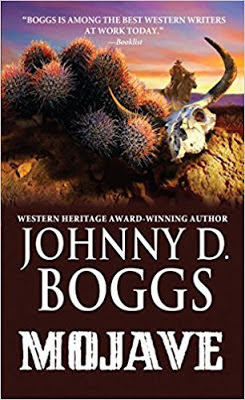 His original love of the six-gun genre was further nurtured by comic books featuring Daniel Boone and Billy the Kid, which he read until they were tattered and frayed. When he was older, the Western section of nearby Ray’s Novel Shop provided fodder for his fertile imagination. The stories stirred something deep in his psyche and he began to see the West as much more than a physical location. For Boggs, the West encompassed an ideal with the power to induce a spiritual connection with readers.
His original love of the six-gun genre was further nurtured by comic books featuring Daniel Boone and Billy the Kid, which he read until they were tattered and frayed. When he was older, the Western section of nearby Ray’s Novel Shop provided fodder for his fertile imagination. The stories stirred something deep in his psyche and he began to see the West as much more than a physical location. For Boggs, the West encompassed an ideal with the power to induce a spiritual connection with readers. While studying journalism at the University of Carolina, Boggs also immersed himself in film and theatre courses, fueling his passion for film history. Discussing the accuracy of Western movies, Boggs contends, “Films are supposed to entertain…When I watch a movie, I want to be entertained. My Darling Clementine, which got the year of the gunfight at the O.K. Corral wrong, entertains. I have to admit Chisum is a guilty pleasure. I even like They Died With Their Boots On. But Son of the Morning Star and Gods and Generals, which got the history right, failed at entertainment.”
Obtaining his journalism degree in 1984, his literary ambitions guided him to follow Horace Greeley’s oft-quoted advice to go west. He ended up in Texas where he spent fifteen years working for the Dallas Times Herald and the Fort Worth Star-Telegram, becoming an assistant sports editor for both publications. Eventually, he burned out on the Texas weather, the Dallas traffic, and big city crime. He joked to his wife about moving to New Mexico to get away from it all. She, however, took him seriously and went all in on the idea. Several months later, the couple packed up and headed for Santa Fe, were they have resided ever since.
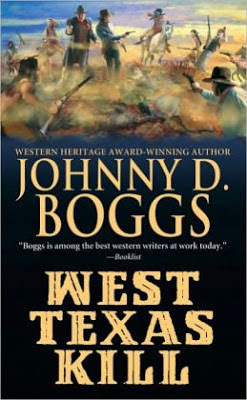 In moving to Santa Fe, Boggs didn’t just leave Texas behind. He also left behind the daily grind of journalism, turning to writing novels and articles for his livelihood… “I was doing what I want to do and, for the most part, writing what I want to write, even if I might sometimes wonder how I’ll pay the bills.”
In moving to Santa Fe, Boggs didn’t just leave Texas behind. He also left behind the daily grind of journalism, turning to writing novels and articles for his livelihood… “I was doing what I want to do and, for the most part, writing what I want to write, even if I might sometimes wonder how I’ll pay the bills.” His love for Westerns remained strong, but siren song of the television and movie version of the Wild West began to fade. He replaced it with a fascination for the gritty reality of the American West, its true history and real life characters. While staking claim to Mark Twain as his favorite writer, Boggs also found inspiration in the works of Jack Schaefer (Shane) and Montana’s most successful Western writer—Dorothy M. Johnson. Boggs considers both authors literary fiction masters who just happened to write about the West.
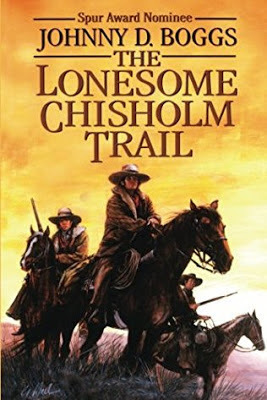 Johnson was known as a witty, gritty, little bobcat of a woman. Refreshingly, her Western characters were not invincible. In stories like The Hanging Tree, A Man Called Horse, and The Man Who Shot Liberty Valance (all of which were made into movies), Johnson conceived the narratives by questioning the Western myth of manly bravado—“I asked myself, what if one of these big bold gunmen who are having the traditional walkdown is not fearless, and what if he can’t even shoot. Then what have you got?”
Johnson was known as a witty, gritty, little bobcat of a woman. Refreshingly, her Western characters were not invincible. In stories like The Hanging Tree, A Man Called Horse, and The Man Who Shot Liberty Valance (all of which were made into movies), Johnson conceived the narratives by questioning the Western myth of manly bravado—“I asked myself, what if one of these big bold gunmen who are having the traditional walkdown is not fearless, and what if he can’t even shoot. Then what have you got?” Jack Schaefer wrote other novels, but the giant shadow of Shane eclipses them all. In creating the character from his most famous work, Schaefer devises a stone killer who finds himself suffering in anguish over the struggle to do right when his every instinct wants to do otherwise. This explorations of human mortality evokes from the reader admiration, respect, and finally adoration for a man trying to save himself from his own evil. Like the works of Dorothy M. Johnson, Shane is a Western, but it eclipses the genre in a way few other novels can accomplish.
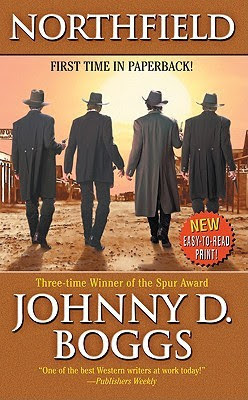 These strong influences led Boggs to create a West based on reality, but interwoven with a mythical consciousness. Rooted in truth, his Westerns connect to genre readers on an emotional level—speaking loudly to those who are fascinated with the real West, but sill love the traditional tropes of Western fiction. Of his approach, Boggs maintains, “Facts can be confining. In fiction, my imagination can take over…I try to make my novels fairly truthful, but I always say, don’t quote me in your term paper.”
These strong influences led Boggs to create a West based on reality, but interwoven with a mythical consciousness. Rooted in truth, his Westerns connect to genre readers on an emotional level—speaking loudly to those who are fascinated with the real West, but sill love the traditional tropes of Western fiction. Of his approach, Boggs maintains, “Facts can be confining. In fiction, my imagination can take over…I try to make my novels fairly truthful, but I always say, don’t quote me in your term paper.” Boggs is the arch-enemy of editors who put try to force physical and cultural restrictions on Westerns. “What draws me into writing a novel or short story are the characters and the land…I don’t like fences and I don’t like boundaries. I like to write about what I want to write about.”
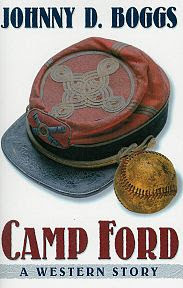 One of Boggs most accomplished novels is Northfield. In it, Boggs skillfully weaves twenty-three first-person viewpoints telling the tale of the James-Younger gang’s attempt to rob the First National Bank of Northfield, and the disastrous consequences of the aftermath. Juggling the multiple viewpoints in Northfield proved a major challenge, but one Boggs gladly accepted... ”I’d read and seen so much hogwash about what happened in Northfield, I wanted to tell the story as accurately as possible.”
One of Boggs most accomplished novels is Northfield. In it, Boggs skillfully weaves twenty-three first-person viewpoints telling the tale of the James-Younger gang’s attempt to rob the First National Bank of Northfield, and the disastrous consequences of the aftermath. Juggling the multiple viewpoints in Northfield proved a major challenge, but one Boggs gladly accepted... ”I’d read and seen so much hogwash about what happened in Northfield, I wanted to tell the story as accurately as possible.” To fill in historical gaps, Boggs gives voice not only to the major outlaws, but also to the often overlooked minor characters. The words of these real people—ordinary farmers, business owners, members of the James and Younger families, and the forces of the law—complete the story as accurately as it can be portrayed while still telling a rousing saga of the West.
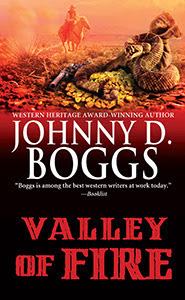 Boggs has a great appreciation for the history of the West. This extends far beyond Main Street showdowns, crooked poker games, and land disputes. He looks for the uncommon and the overlooked. In his novel Camp Ford, Boggs interwines the Civil War, the West, and baseball. With its theme of Union soldiers introducing baseball to various parts of the country during the Civil War, Camp Ford is based on historical fact. Chronicling the amazing changes America underwent during the span of one man's life, Camp Ford starts with the 1946 World Series as 99-year-old Win MacNaughton recalls the greatest baseball game of his entire life, and the events leading to that 1865 contest between a ragtag collection of Union prisoners of war against a squad of Confederate prison guards. Camp Ford is a Western, but it is filled with pathos, friendship, honor, betrayal, and a sly humor, which make it so much more than a simple six-gun shoot ‘em up.
Boggs has a great appreciation for the history of the West. This extends far beyond Main Street showdowns, crooked poker games, and land disputes. He looks for the uncommon and the overlooked. In his novel Camp Ford, Boggs interwines the Civil War, the West, and baseball. With its theme of Union soldiers introducing baseball to various parts of the country during the Civil War, Camp Ford is based on historical fact. Chronicling the amazing changes America underwent during the span of one man's life, Camp Ford starts with the 1946 World Series as 99-year-old Win MacNaughton recalls the greatest baseball game of his entire life, and the events leading to that 1865 contest between a ragtag collection of Union prisoners of war against a squad of Confederate prison guards. Camp Ford is a Western, but it is filled with pathos, friendship, honor, betrayal, and a sly humor, which make it so much more than a simple six-gun shoot ‘em up. While both Northfield and Camp Ford show Boggs’ penchant for historically based storytelling, he also writes excellent straight ahead action/adventure style Westerns. The historical research is still there in the fine details, but the action is front and center.
In the opening scene of Valley of Fire, a nun and an outlaw walk into a jail...Okay, the outlaw walked in before the nun got there, but they definitely leave together in a blaze of violence. Their actions upset a large contingent of unsavory characters, ensuring the relentless action never flags. While not exactly a sister of mercy, the nun is really a nun and she makes sure there is hell to pay before the gold hidden in the Valley of Fire can be recovered.
Boggs and other modern Western wordslingers are ensuring the genre continues to thrive as a vibrant style of storytelling. As Boggs himself puts it, “I think Westerns have always been the ugly stepchild when it comes to genre fiction, but it’s still there despite countless epithets and death songs over the past several decades. People still like those stories...Writing Westerns is keeping me busier than ever...”
Published on November 29, 2019 06:37



